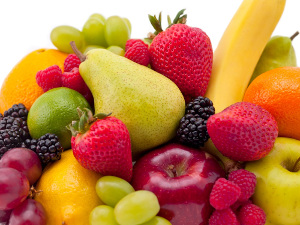Sugar metrics guide Japanese fruit purchases

The word "refractometer" may not ring any bells with the typical consumer, but in Japan the instrument is directing shopper choices at the grocery store.
On a demanding retail market, the device helps set fresh fruit apart by measuring brix levels, or sweetness, for use in public displays.
Although the working details of the measurements are quite technical, Atago U.S.A., Inc. president Yusuke Amamiya explained that Japanese consumers increasingly understand and demand to know the brix levels of their imported strawberries, mangoes and other fresh fruits.
"In Japan, fruit is very expensive. That’s why consumers need to know if it is a good fruit. Otherwise, they are going to waste their money," Amamiya told www.freshfruitportal.com during industry event Fruittrade in Santiago, Chile.
"If stores want to sell more, they need to indicate that level and then the consumer will understand. It’s for mutual benefit."
The instrument, typically used by importers and exporters, measures sweetness by observing light refraction in the fruit's juices - the greater the sugar content, the greater the angle of refraction. This allows farmers to measure sweetness directly in the field and then indicate levels to buyers.
Over 70 years ago, when Amamiya's grandfather adapted the technology, the device meant greater efficiency for the nation's pineapple industry.
"Originally the technology was from Germany. My grandfather was an engineer and learned how it worked, so he started making it himself. Luckily, the Japanese Agriculture Organization started using our instrument a long time ago and they told the farmers to use the Atago instrument to check the brix level," he said.
"Back then, Japan had lots of pineapple fields. Farmers would cut the fruit and take it back to the lab to check the brix level with a microscope. My grandfather started thinking, this is not convenient. So he started making a very compact instrument, because Japan is good at compact things."
Early adoption of the company's technology has given Atago an advantage on the Japanese market. With an 85% market share, according to Amamiya, Atago is by far the most established national company for the technology.
Now with expanded usage directed at retail consumers, the potential for greater adoption by grocery stores is growing.
"It’s becoming standard [to display the brix level]. It’s not in all grocery stores but the [most known] grocery store started doing it, so other small grocery stores have followed to be more competitive," he said.
"Lower brix level products go to be processed to make jam because they cannot sell because consumers decline if it’s not a good brix level. Since they don’t want to waste the fruit, they sell it to processing companies."
In the United States, where fruit comes with greater availability and lower prices, such application has been a harder sell.
"In the U.S., when the grocery store receives their fruits from the farmers, they check them. In the receiving area, they use our instrument to check the brix level. But they don’t indicate the brix level for consumers, yet," he said.
"Most people say, 'no, we just sell in bulk,' so we don’t have to indicate the level. But when they receive the product from farmers, they are strict about the brix level. It’s not for the consumer yet but business-to-business, they are doing it."
Amamiya said the company is currently in talks to win over U.S. retailers on the utility of providing such information to shoppers. He estimated that the company's current market share in the U.S. is about 35%.














































